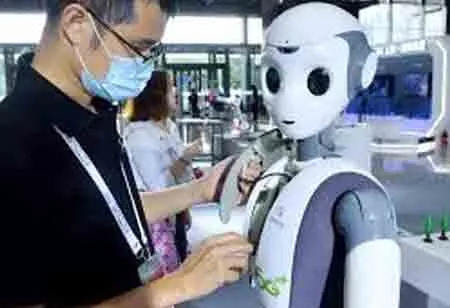THANK YOU FOR SUBSCRIBING
Be first to read the latest tech news, Industry Leader's Insights, and CIO interviews of medium and large enterprises exclusively from CFO Tech Outlook
THANK YOU FOR SUBSCRIBING

By
CFO Tech Outlook | Tuesday, July 27, 2021
Stay ahead of the industry with exclusive feature stories on the top companies, expert insights and the latest news delivered straight to your inbox. Subscribe today.
AI-driven tax policies can pave the way for new methods of testing social policies and analyzing their impacts.
FREMONT, CA : Inequality is one of this generation's most pressing social and economic issues. It has risen substantially in the last few years and has become firmly ingrained in many cultures. Today, the data are disturbing, according to the OECD, the average income of the wealthiest 10 percent of the population is around nine times that of the poorest 10 percent.
Without purposeful initiatives to reduce inequality, the gap between rich and poor cannot be bridged. As a result, despite its critics, tax policy is an essential instrument for governments. It allows them to minimize inequality by redistributing wealth through the benefits and services they deliver.
Nonetheless, determining the best tax policy can be difficult. The fundamental reason for this is because it has discovered a balance between two contradictory goals: equality and productivity. To put it differently, tax policy should promote equality without compromising people's motivation to work, which would result in reduced output.
Even with these two goals in mind, determining the best effective tax policy is challenging due to conducting real-world experiments. As a result, economic theory is frequently used. But the latter makes numerous simplifying assumptions that are difficult to verify.
How can AI be used for tax policy design?
AI, and more specifically, Reinforcement Learning, offers tools for simulating an artificial economy and monitoring and analyzing the effects of various policy situations quantitatively.
It involves modeling many agents. These agents exist in a particular context, which is a simulated economy with a specified tax policy. They are rewarded or penalized for each action they choose to perform. They finally develop the best decision-making method that will enable them to maximize the benefits gathered overtime after numerous repetitions.
It is possible to quantify the efficiency of the tax policy in terms of agent productivity and overall equality by tracking the behavior of these agents. AI opens the door to new ways of evaluating and analyzing social policies. It alleviates the constraints of a lack of data and ethical concerns that stifle more traditional methods of experimentation.
In the case of tax policy, Reinforcement Learning allows for creating unique settings and the placement of interaction agents with various goals. It is feasible to measure the influence of predetermined tax policies and even build one that maximizes total social welfare by studying how they adjust to each other.
See Also: Top Treasury Management Technology Solution Companies
I agree We use cookies on this website to enhance your user experience. By clicking any link on this page you are giving your consent for us to set cookies. More info

However, if you would like to share the information in this article, you may use the link below:
www.cfotechoutlookeurope.com/news/how-ai-can-impact-tax-policies--nid-1523.html



